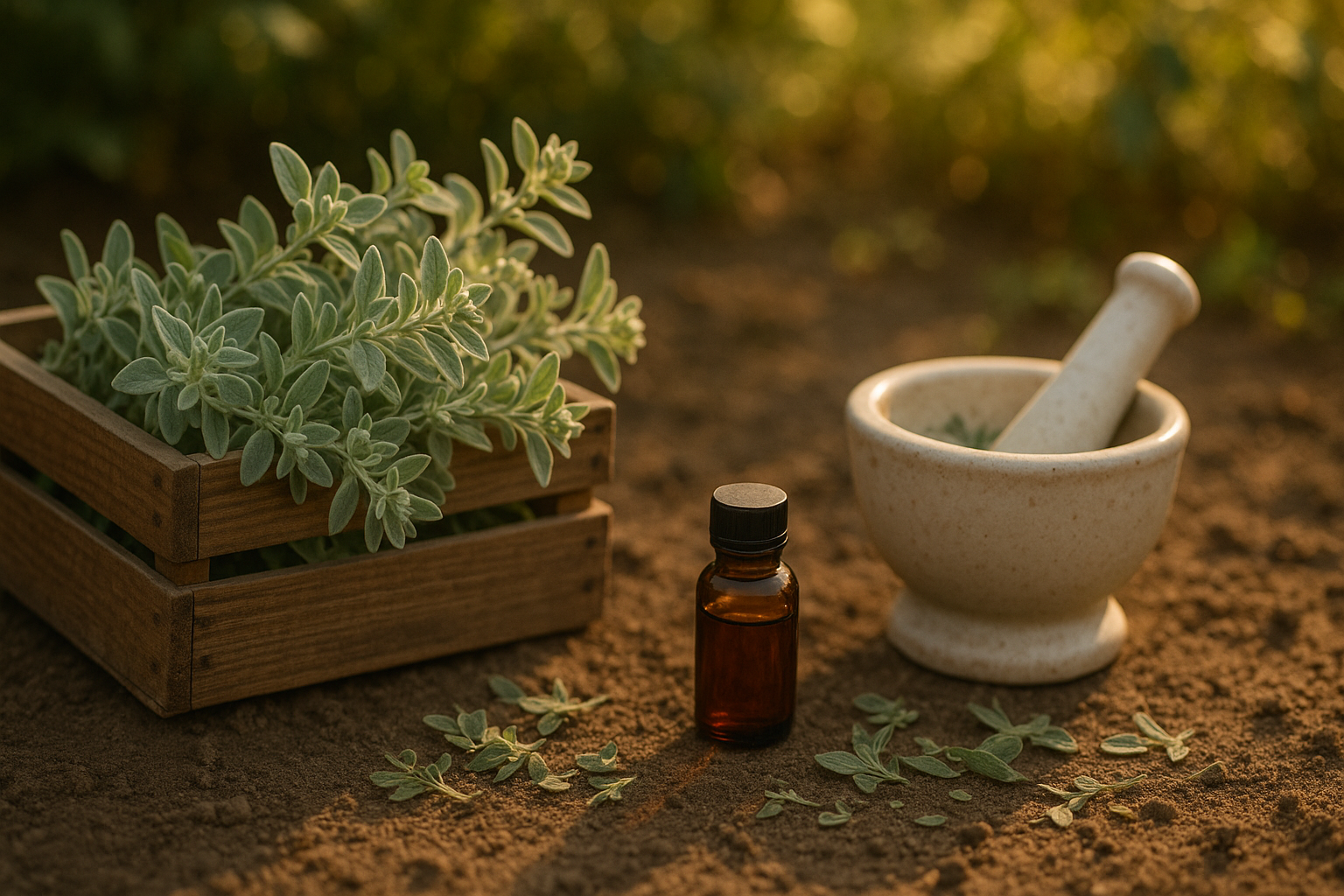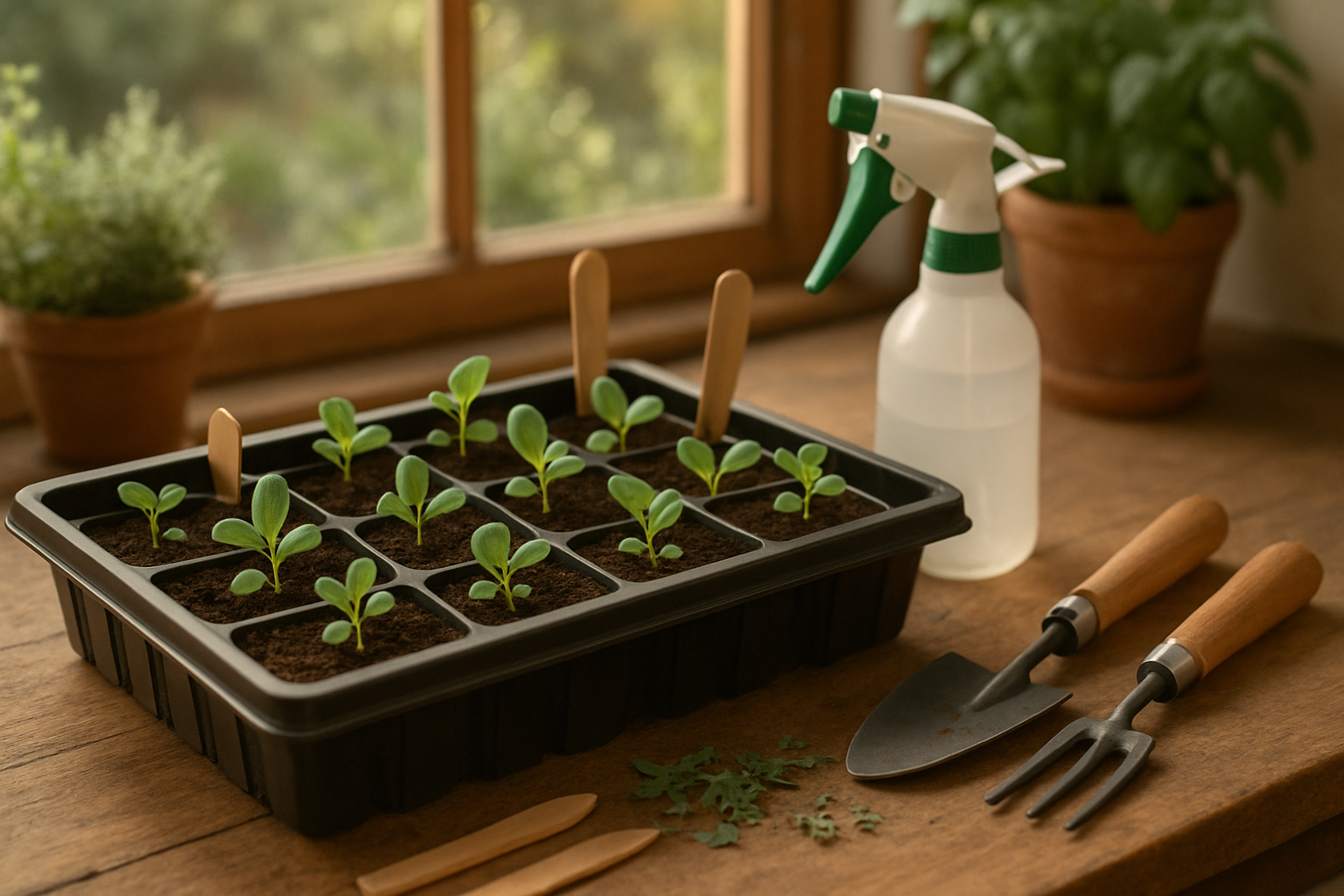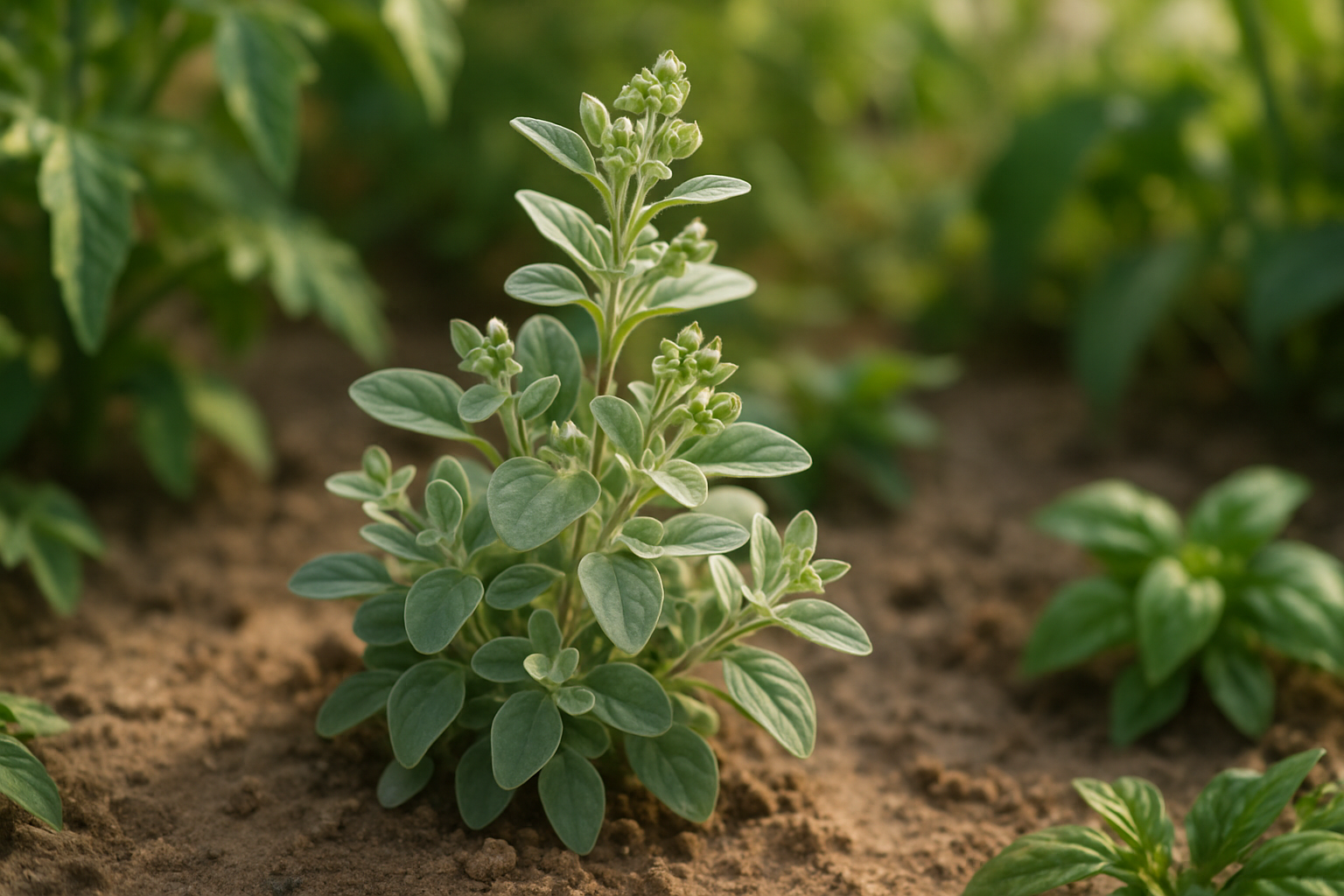What is Sweet Marjoram?

If you’re curious about marjoram companion plants, it’s helpful to first get to know sweet marjoram itself. Sweet marjoram (Origanum majorana) is an aromatic herb cherished for its delicate, slightly sweet flavor and soft, oval-shaped leaves that boast a silvery-green hue. Often confused with oregano, marjoram is gentler and more complex, lacking the pungent, peppery notes that make oregano a bold addition to Mediterranean dishes. While both belong to the mint family, marjoram’s flavor is milder, which is why chefs reach for it when they want to layer subtle herbal notes without overpowering a meal.
Beyond its place in the kitchen, sweet marjoram’s history stretches back to ancient Greece and Rome, where it symbolized happiness, love, and longevity. Brides and grooms once wore marjoram crowns at weddings, believing the herb would bring joy and peace to marriage. In traditional medicine, marjoram was highly valued for its soothing properties—used to ease digestion, calm nerves, and even relieve muscle aches. This multi-purpose herb still finds its way into herbal teas, essential oils, and salves today.
With such a storied past and gentle presence in the garden, it’s no wonder marjoram is a favorite among gardeners and cooks alike. Understanding its nature helps unlock the full potential of marjoram companion plants, optimizing your herb garden for both beauty and productivity.
Culinary and Medicinal Uses
Sweet marjoram is a versatile herb often used to add a delicate, slightly citrusy flavor to a variety of dishes. In Mediterranean and Middle Eastern cuisines, it’s a staple in soups, tomato-based sauces, poultry dishes, and roasted vegetables. You’ll often find it in recipes for Italian sausage, Greek lamb, and herbed oils for salad dressings.
Just sprinkle chopped fresh marjoram over pizza, pasta, or grilled fish to brighten up the flavors, or mix it into stuffing and marinades.
Beyond the kitchen, sweet marjoram has been cherished for its medicinal properties for centuries. Traditional remedies use marjoram tea to help soothe digestive issues like bloating or cramps, while steam inhalations with marjoram oil are sometimes used to ease congestion from cold symptoms. Some herbalists recommend marjoram-infused balms for minor muscle aches or stress relief; its calming scent is also found in aromatherapy blends.
However, while marjoram is considered safe in small, culinary amounts, it can cause allergic reactions in some people—especially those sensitive to oregano or basil, which come from the same plant family. Consuming large amounts or using concentrated oil may lead to stomach upset or skin irritation, so moderation is key. Pregnant people should avoid concentrated marjoram oil, as it may be unsafe during pregnancy.
As with any new herb or remedy, it’s wise to test a small amount first and consult a healthcare provider if you have allergies or underlying health conditions. By enjoying sweet marjoram sensibly, you can add flavor to your food and potentially benefit from its traditional health uses.
How to Grow Sweet Marjoram

Sweet marjoram thrives in well-drained, sandy or loamy soil with a neutral to slightly alkaline pH. For clay-heavy soil, amend it with compost or sand for the best results. This aromatic herb loves sunlight, so aim for at least 6 hours of direct sun daily—whether planted in the garden or on a sunny windowsill.
Start seeds indoors about 6-8 weeks before your last expected frost. Sow them thinly on the surface of moist seed-starting mix (since they need some light to germinate) and press gently without covering. Keep the trays in a warm spot around 70°F (21°C) and mist regularly to keep the soil barely moist.
Once seedlings are large enough to handle and have a few true leaves, transplant them into their final location, spacing each plant about 8 inches apart to ensure good airflow. Once established, marjoram prefers to be kept on the dry side—water only when the top inch of soil feels dry, and avoid letting the roots sit in soggy soil.
Regularly pinch back the tips once the plants reach 4-6 inches tall to encourage bushiness and more leafy growth. Marjoram is relatively pest-resistant, but keep an eye out for aphids or spider mites. A gentle spray of water or a mild insecticidal soap usually handles any trouble.
Deadheading faded flowers can help extend the harvest season. Don’t hesitate to harvest leaves frequently—this actually helps the plant stay productive and full. With the right care, your sweet marjoram will provide fragrant, flavorful leaves for months, whether used fresh in the kitchen or dried for later enjoyment.
Harvesting and Storing Marjoram
The best time to harvest marjoram is just before the plant starts to flower, as this is when the leaves have the highest concentration of essential oils for maximum flavor. Use clean, sharp scissors or garden shears to snip stems in the morning, after the dew has dried but before the midday heat.
To dry marjoram, gather small bunches, tie the stems together, and hang them upside down in a warm, well-ventilated area away from direct sunlight. Once the leaves crumble easily between your fingers—usually within a week or two—strip them from the stems and store them in an airtight container in a cool, dark place. Glass jars work best, but be sure they’re completely dry to prevent mold.
If you prefer to keep marjoram fresh, place sprigs in a jar with a little water (like cut flowers) and cover loosely with a plastic bag in the fridge. Changing the water every few days can help keep the marjoram fresh for up to a week. For longer storage, try freezing marjoram leaves in oil or water using ice cube trays—just pop out a cube when needed.
Always label and date your containers to keep track of the marjoram’s potency, as dried herbs are best used within a year for optimal flavor.
Companion Planting with Marjoram
Marjoram is a fantastic addition to any herb or vegetable garden, thanks to its gentle, sweet fragrance and powerful companion planting qualities. Pairing marjoram with vegetables like tomatoes, peppers, eggplants, and beans can help enhance their growth and flavor—many gardeners report that tomatoes taste sweeter and more robust when marjoram is nearby.
Marjoram also acts as a natural pest deterrent, attracting beneficial insects such as bees and predatory wasps while helping to repel aphids and spider mites. You can plant marjoram at the borders of your beds or tuck it between vegetables for maximum effect; this will also boost pollination activity in your garden.
Best Companions and Planting Tips
Herbs like rosemary, basil, and oregano are also good companions, working together to increase each other’s vitality. However, avoid planting marjoram alongside mint, as mint is aggressive and will out-compete marjoram for space and nutrients. Also, steer clear of planting it where thyme is densely growing because they can compete for root space, diminishing both plants’ health.
For best results, give marjoram moderate sunlight and well-draining soil, and pinch back flowers to keep growth bushy. Marjoram’s compact size makes it ideal for raised beds and container gardens as well.
Benefits of Thoughtful Planting
By choosing suitable companions and spacing marjoram thoughtfully, home gardeners can enjoy healthier plants, fewer pests, and even tastier harvests throughout the season.
Troubleshooting Problems and Common Issues
Plant enthusiasts often face challenges like diseases, pests, and environmental stresses that can hinder healthy growth. Common disease symptoms include yellowing leaves, wilting, or unusual spots—often caused by fungal or bacterial infections.
To minimize disease spread, remove affected leaves promptly and avoid overhead watering, which creates a damp environment for pathogens.
Pests such as aphids and spider mites may be spotted by sticky residue or webbing on leaves. Combat these with a strong spray of water, insecticidal soap, or by introducing natural predators like ladybugs.
Environmental stresses, including too much sunlight, poor drainage, or temperature fluctuations, can also stress plants. Avoid placing delicate plants in hot, direct sun and always check that pots have drainage holes to prevent root rot.
Regular maintenance is key: inspect plants frequently, wipe dust from leaves, and fertilize appropriately during the growing season.
By keeping your tools clean and spacing plants for good airflow, you’ll help prevent many common problems before they start, ensuring your greenery thrives year-round.
Creative Gardening Ideas Using Marjoram
Marjoram is a versatile herb that easily finds a place in various garden designs, adding both fragrance and beauty to your outdoor space.
In traditional borders, try planting marjoram alongside lavender, sage, or creeping thyme—the mix of textures and scents creates a lively, aromatic strip that looks attractive and draws pollinators.
Rock gardens are another great setting for marjoram since it thrives in well-drained soil; place it near low-growing sedum or alpine plants to add softness and edible value to your display.
If you’re short on space or want a focal point, consider building a simple herb spiral: plant marjoram on a sunny mid-tier, letting it spill gently over the edges, and surround it with chives, oregano, and dwarf basil for culinary variety.
Container gardens are flexible options, too—combine marjoram with trailing nasturtiums or compact chili peppers for a productive yet visually interesting arrangement.
To push creativity further, try using colorful planters or upcycled containers like teapots or wooden crates on patios and balconies, bringing marjoram’s sweet scent right to your door.
Whether grouped with companions or showcased solo, marjoram’s subtle leaves and delicate blooms are sure to make any garden feel more inviting and unique.
